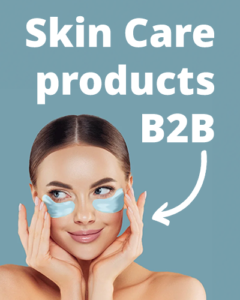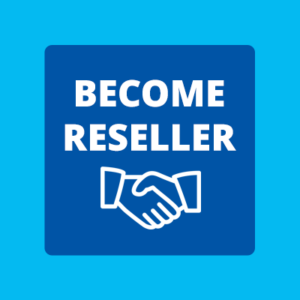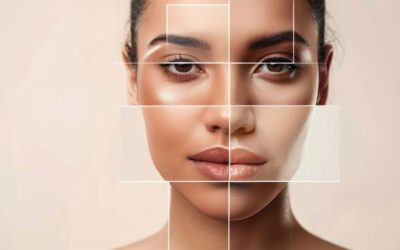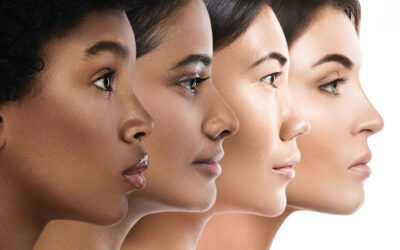The B2B cosmetic industry is essentially the circle of life for much of the beauty sector, consisting of various key players, such as skin care product manufacturers, cosmetic distribution centers, cosmetic wholesale specialists, retailers, and more. If you’re part of the industry or thinking of entering, you may question what really happens in this quickly evolving field. Or maybe you’re just curious. We’ve compiled some information to assist in your research.
General Information
In total, those in the beauty industry are bringing in billions each year. Moreover, this industry is projected to grow by 4.2% from 2023 until 2030, which means even more businesses will enter and revenue is expected to increase even further.
As of 2024, IBIS World states there are 172,644 enterprises in the beauty industry, including those in skin care products manufacturing. While you may only think of your area of business or the ones that bring beauty products directly to consumers, such as cosmetics wholesalers, the market is vaster and more complicated than that, and an assortment of businesses work together to create and distribute products.
Specifically, the B2B cosmetics industry begins with product manufacturers. Without them, you may never have heard of brands like L’Oreal and Estee Lauder, which rely on B2B marketing.
The manufacturers then send them to cosmetics distribution centers where they remain until they are shipped to cosmetic wholesale specialists and retailers who deliver them to the customers.
Current Trends in the Industry
Whether it’s from the view of a skin care products manufacturer or a cosmetics wholesale retailer, they’ll tell you that the industry is forever changing. What’s popular today may be nearly obsolete a year from today when something consumers want more comes out on the market.
With that being said, in the industry currently, one of the key drivers is a shift toward natural and organic products. Consumers are becoming more aware of the substances in synthetic products, such as parabens — a common preservative found in moisturizers, lotions, makeup, and numerous other beauty and hygiene products. Therefore, more companies are developing products with these customers in mind and without these ingredients.
Veganism is more than a growing market trend. It’s a way of life for over nine million Americans. This has created a growing need for brands producing products that use no animal-based ingredients. Along with an increased demand for these products comes an elevated need for distributors and others in the vegan-friendly products sector.
An ongoing emphasis on remaining youthful continues to keep the beauty industry booming.
B2B Strategies in the Cosmetics Market
While B2C marketing focuses on relations and interactions between a business and the consumer, the B2B market is different and requires a different level of marketing and networking.
For instance, creating distribution partnerships is vital because this can allow a brand to reach a larger group of consumers, particularly when a distributor has a large network, or the manufacturer works with multiple distributors.
Choosing a trustworthy supplier is also a necessity. This company will oversee the production, labeling, and transporting, which are major components of getting a product onto the shelves.
Case Studies and Success Stories
A prime example of a company that utilized B2B is Estee Lauder. This company has targeted the audience by working with an AI technology company that created a program for users to try makeup virtually. The iMatch app has impressively increased its conversion rate by 2.5.
Even in 1940, Estee visited department stores to enhance product reach. Then, throughout the years, Estee increased the reach of her products by working with distribution centers and major retailers, amplifying a modest beginning and morphing it into a billion-dollar corporation.
Another example is L’Oreal, which began in the early 1900s with the chemist Eugène Schuelle, who created a hair dye incomparable to others on the market at the time. He distributed the product to Parisian salons.
Eventually, Lindsey Owen-Jones began managing the company and took it to new heights, creating a well-known, worldwide beauty brand. In fact, it’s the leading beauty brand in the world. L’Oreal has an array of carefully selected suppliers around the globe. As a specific example, their B2B strategy in the U.S. currently generates $40 billion in revenue.
Comparison Between the B2B and B2C Market
As you compare the beauty product market, such as skin care products B2B vs. skin care products B2C, you may wonder how they compare. First and foremost, the results are the same for both — getting sales.
With that said, with B2B, transactions go from business to business during the process, such as with one company supplying materials for the production process or one business holding the products for another to await distribution. Ultimately, in this form of enterprise, different companies become B2B partners for one another to sell the product.
Overall, B2B companies tend to sell more products than B2C ones because of how widescale product manufacturing can be.
Overall, some of the major brands consumers know and love today use a B2B marketing strategy. Possibly, this could benefit your company, as you see where your potential lies. And it’s interesting to see how humble beginnings turn into mega conglomerates.








